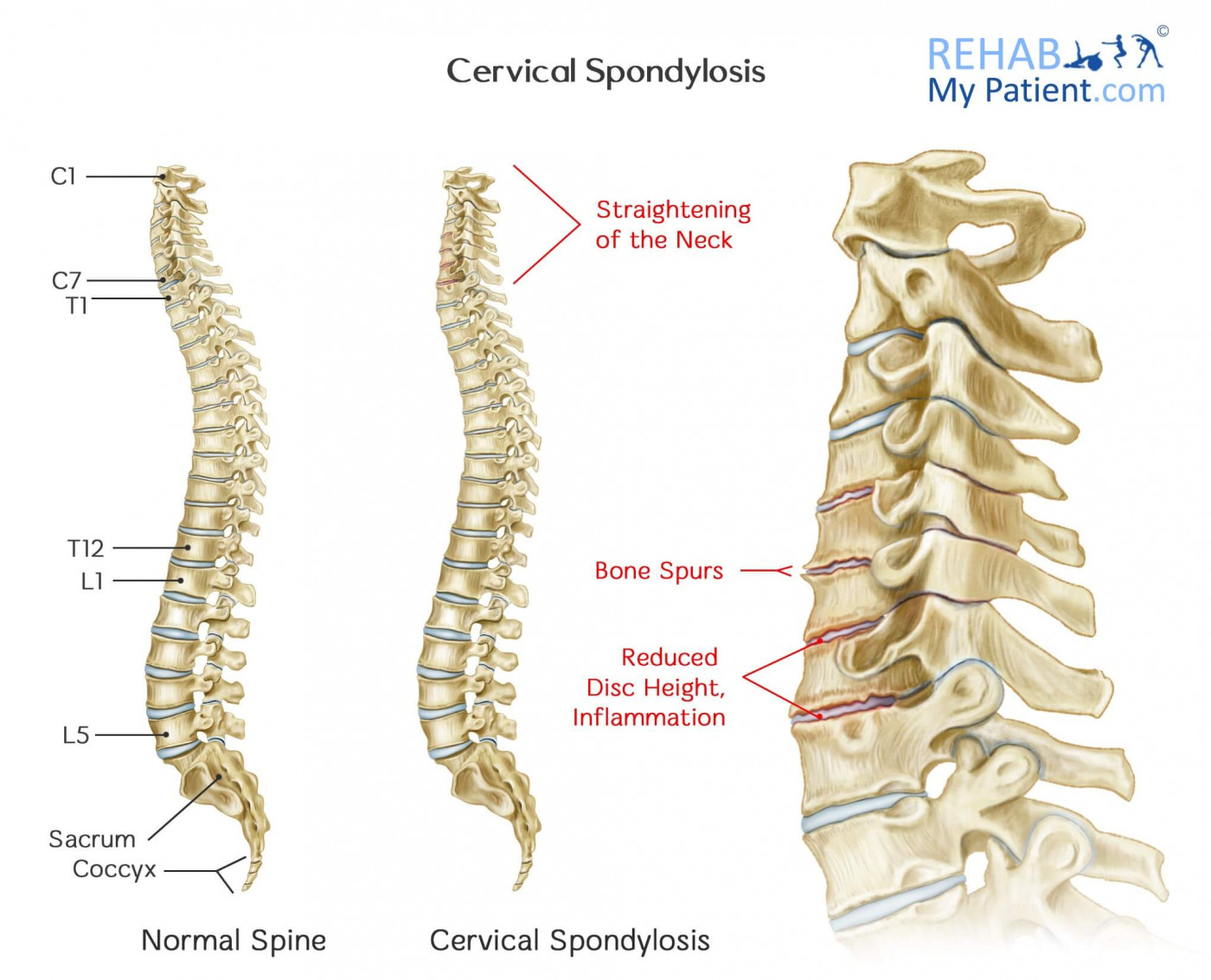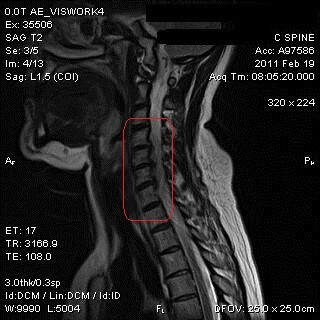Cervical Spondylosis
Opublikowano dnia 16th Aug 2017 / Opublikowano w: Szyja

Neck pain occurs more often than one might think. Any number of things can cause neck pain, but it is often attributed to aging. Like the rest of your body, the bones found in the neck will slowly degenerate as you grow older. It is because of this that arthritis sets in, which is referred to as cervical spondylosis.
Cervical spondylosis occurs when the joints in the neck degenerate. Many people know it as wear and tear, and it’s quite normal as one gets older. For those who are over 60 years of age, more than 85 percent have this condition. Even though this might be a common type of arthritis, cervical spondylosis rarely ends up as disabling or crippling. But it can certainly give you very chronic neck ache.
Cervical Spondylosis Anatomy
The spine is the upper part of the vertebral column. It starts underneath the skull and extends to the pelvis. Seven stacked bones make up the cervical spine. A solid, round cylinder composed of bone makes up the front of every vertebra. Between all of the pairs of vertebrae, a disc attaches the vertebra to the bottom of the one above it and the top of the one below it. Discs serve as rubber cushions that lie between the vertebrae. Muscles and strong ligaments all keep the vertebral column together.

The main cause of cervical spondylosis is wear and tear (degenerative changes) to the discs and facet joints. These facet joints are just like any other joint in your body, and articulate between the bones to allow movement to the neck. This is why your neck typically gets stiffer as you get older, due to the spondylotic changes.

An MRI scan showing cervical spondylosis (degenerative changes to the neck)
How to Treat Cervical Spondylosis:
- Physical Therapy
Stretching and strengthening strained or weakened muscles is often the first method of treatment. A physical therapist can use neck traction and posture therapy. Depending on the type of program you are in, treatment may range from six to eight weeks, but can last longer in severe cases. Sometimes patients find maintenance or regular treatment sessions very beneficial to offset the progression of degenerative changes. Physical therapy might include physiotherapy, osteopathy, chiropractic, sports massage, or other types of hands-on therapy.
- Anti-Inflammatory Medication
When it comes to neck pain, anti-inflammatory medications are often used to help overcome pain and inflammation. These medications can be prescribed for weeks on end, based upon the type of problem you are dealing with. If you have a serious contraindication to anti-inflammatory medications or you cannot control your pain, there are other options that can be used such as ice/heat. The main thing to consider is that as you get older your stomach and bowel are a lot more sensitive to anti-inflammatories, so be careful with prolonged use, and look for other alternatives if you catch yourself requiring repeat prescriptions.
- Muscle Relaxers
Easing muscle spasms can be accomplished with carisoprodol, cyclobenzaprine, valium or diazepam. Again, prolonged use should absolutely be avoided, so seek other alternatives such as manual therapy.
- Soft Collars
Using a collar will help to limit motion and allow the neck muscles to rest. They should only be worn for a limited period of time. In the short term they can take pressure off the neck, and give confidence to the person wearing them. But wearing them for an extended period will cause the neck muscles to lose strength.
- Steroid Injections
Many individuals find relief over the short-term from a steroid injection. Various forms of these injections are often performed, but the main goal is to help minimize the amount of pain the individual is suffering with. Steroid injections can be very beneficial when physical therapy is not working, and you need a step forwards before the physical therapy can work, or you are suffering with chronic inflammation that’s been hard to get rid of.
Tips on How to Improve Cervical Spondylosis:
- Jobs that require a great deal of overhead work and neck work leave individuals more susceptible to neck pain.
- Smoking is attributed to an increased risk of pain in the neck.
- If you have a family history of neck pain, you can expect that you might deal with it at some time or another.
- Anxiety and depression can cause you to deal with neck pain.
- An on-the-job injury or car accident is one of the main causes of neck pain.
- Maintain neck movement. Don’t let your neck stiffen up. Ask your therapist for an exercise program for this.
Zapisać się
Zarejestruj się już teraz, aby skorzystać z bezpłatnego okresu próbnego!
Zacznij korzystać z Rehab My Patient już dziś i zrewolucjonizuj proces przepisywania ćwiczeń, aby zapewnić sobie skuteczną rehabilitację.
Rozpocznij 14-dniowy bezpłatny okres próbny